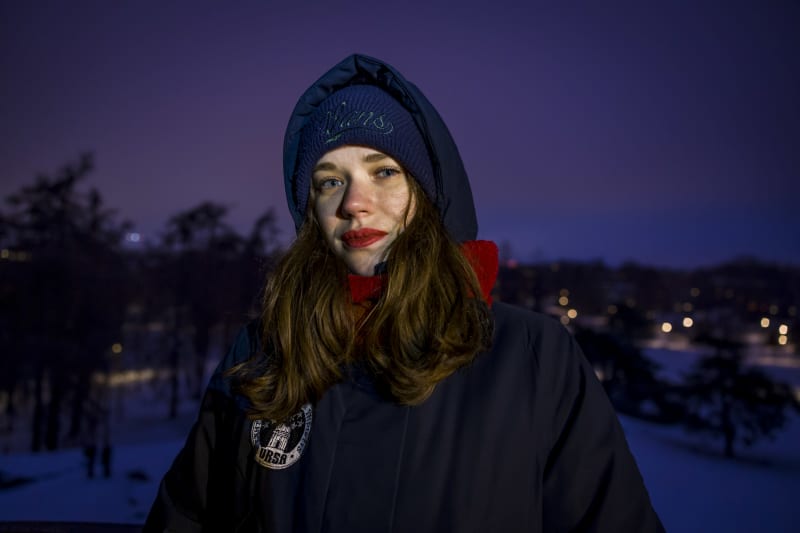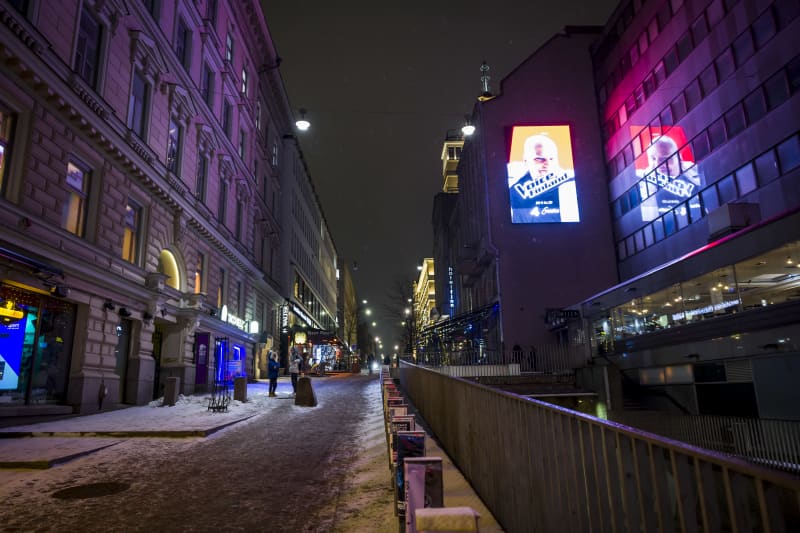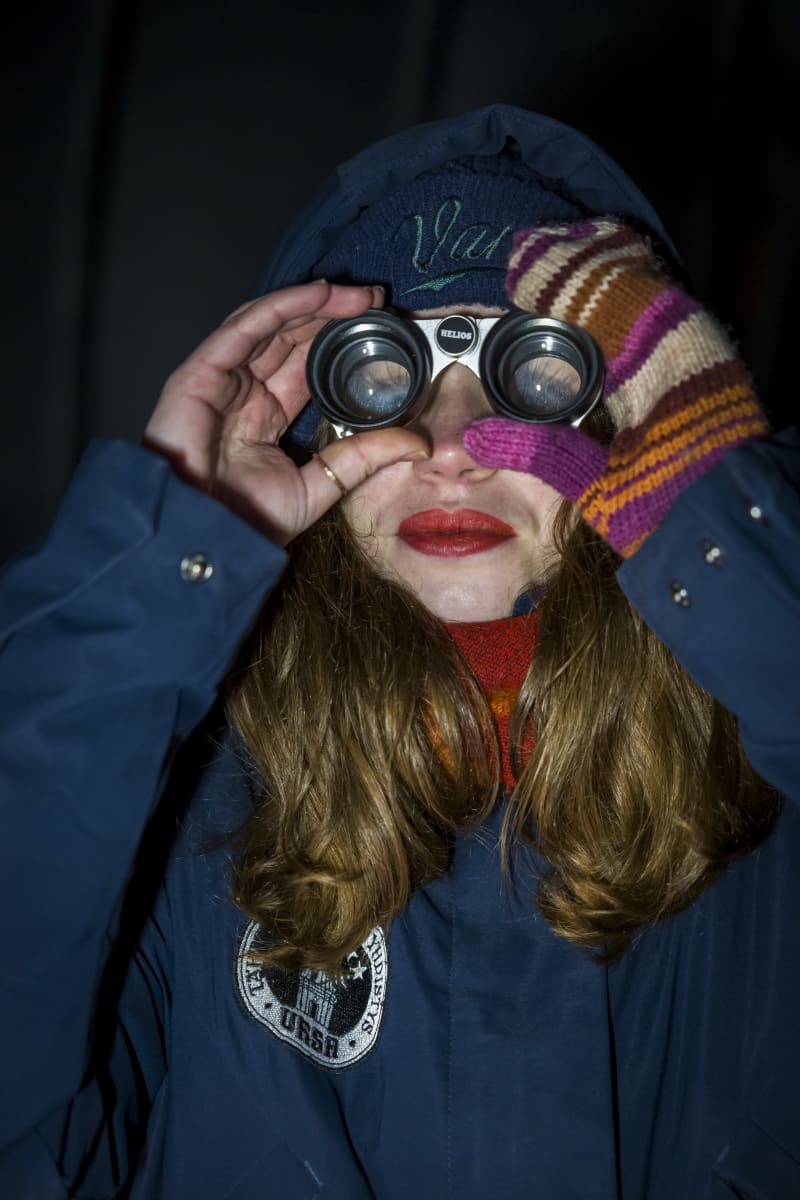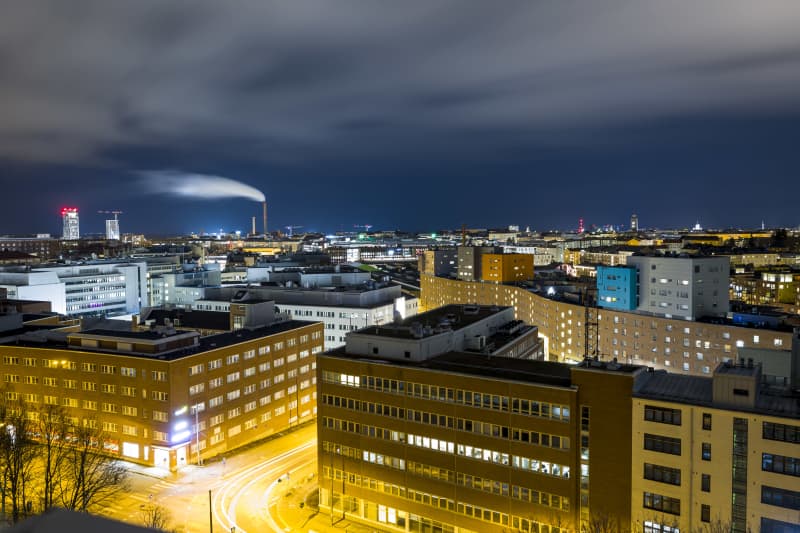
According to the researcher, Finland is one of the best lit places in Europe. This is harmful to both people and nature.
Sometimes everyday life is miserable. Stressing.
How we are all part of it.
How the universe has developed over a long period of time in such a way that it is able to observe itself.
Rintamäki calls these basic things. Thinking about them makes you feel better.
One of the basic things is the starry sky spreading over us. It has shaped humanity throughout history.
But thinking about the starry sky can sometimes also be miserable from Rintamäki. When you remember that something so basic starts to be a rare treat.
– It’s quite a sad thought that darkness seems to be a disappearing thing.
When the darkness disappears, so do the stars.
Of course, the stars don’t disappear from the sky.
We ourselves waste them.
City lights
Jonna Rintamäki opens the roof hatches of the nearly hundred-year-old observatory in Helsinki’s Kaivopuisto with familiar gestures. The hatches are frozen and require force.
26-year-old Rintamäki works at the Astronomical Society Ursa and the Helsinki Observatory. At Ursa, he works, among other things, as a caretaker of the Kaivopuisto observatory and as a star actor.
The old observatory of Kaivopuisto and its trails are therefore familiar to Rintamäki.
In general, telescopes are not turned towards the city. There is far too much light pollution in that direction, even for Ursa’s powerful devices.
Instead, the eyes are directed to the sea. It’s almost dark on the beach.
In Rintamäki’s opinion, light pollution is its own environmental problem.
Light pollution is, for example, light in the wrong place. The Finnish Environment Agency Syke says that light pollution is artificial light that causes harm to ecosystems or people’s health or comfort.
In Rintamäki’s opinion, it is paid too little attention.
– Of course I understand that there must be lights in the city, but there could be fewer of them or at least they could be aimed better.
In 2019, the city of Helsinki conducted a survey on nuisance lights. It received more than 1,500 responses. People said that they find bright advertising lights, construction site lights that burn all night and street lights that come in through the windows to be disturbing.
And it’s not just about Helsinki.

The amount and brightness of light increase every year
Of the different continents, Europe has the most light pollution, says the International Dark Sky Organization.
Finland is no worse than others here.
He has been studying light pollution for years.
The European Space Agency ESA has found that since cheap LED lights have entered the market, the use of light has only increased in Europe.
According to Lyytmäki, people often associate artificial light with good, comfortable and safe.
– That is the basic problem here. You don’t know how to take disadvantages seriously.
He illustrates why the disadvantages should be taken seriously.
In humans, exposure to light at the wrong time affects, for example, the hormonal system. It has effects ranging from mental health to physical health, such as the accumulation of excess weight.
– If we are exposed to the wrong kind of light at the wrong time, it very effectively mixes up our natural daily rhythm. That’s when the body suddenly goes crazy.
Researchers have found that exposure to artificial light at night is linked to an increased risk of cancer (Helsingin Sanomat).
Due to artificial light, some species cannot schedule their vital functions at the right time. For example, deciduous trees may not be able to prepare for winter or burst into leaf at the right time due to light pollution, Syke’s leading researcher Jari Lyytimäki says.
In a recent study by the University of Helsinki, it was again found that due to light pollution, it is difficult for glowworm dogs to find brilliant females.
In addition, light pollution disturbs migratory birds that use the stars to navigate at night, says Lyytimäki.
Already in 2007, Unesco together with several other actors made a declaration to protect the night and starry sky.
However, the stars twinkling in the sky now dim as light pollution increases.
In addition to the stars, it is also worth talking about the Moon for a moment.
The brightest light in the night sky
The moon is a particularly significant celestial body for Jonna Rintamäki.
That got him interested in space.
As an elementary school student, Rintamäki began to pay attention to the movements of the Moon.
Since then, the journey has continued towards other wonders of space.
– The moon is still my favorite celestial body.
It is also important – downright vital – for many organisms.
Eklöf says that half of all insect species live at night. They use the stars and moonlight to navigate when looking for food or a mate.
For example, a moth flies into the night sky with the help of the brightest light source, the Moon.
A moth gets into trouble when it encounters, for example, a street lamp. The moth is captured by the light. It thinks it’s orienting relative to the Moon, but it’s actually spinning in circles around the street lamp.
Before dawn, the butterfly may have already died of exhaustion.
Why should this move us?
Because Eklöf says that moths have proven to be at least as important pollinators as bees that are active during the day.
And if light pollution bothers our night shifters, we’re in trouble.
However, signs of change are in the air.

The need for darkness is being talked about more and more
Last year at the UN, this was the first time that the dark and silent sky was officially discussed at the UN.
At the end of last year, the Czech Republic, during its EU presidency, pointed out that light pollution has not previously been dealt with on a similar scale at the European level.
As Syke’s leading researcher Jari Lyytimäki sums it up, we no longer think that any light is always good.
– But now darkness has its own role in lighting design. Let’s plan more of that twilight, a balance between the need for light and darkness.
The cityscape includes advertising screens, construction site lights, street lights as well as private yard lights. A suitable balance must be found between different light sources. Kauppinen does not talk about light pollution like the researchers, but about interference lights.
– Disturbance light is wrongly directed and wrongly used lighting.

Both Lyytimäki and Kauppinen have noticed that the need for darkness is being talked about more and more internationally.
Somewhat surprisingly, this winter’s energy crisis has also turned into a victory for the darkness of the night. For example, in Mikkeli and Savonlinna this winter, street lights have been turned off at night to save energy.
Kauppinen says that the development of technology enables timely use of public lighting.
– We can dim the lights when almost no one is using that lighting in the urban environment. Or when there is snow on the ground and the light reflects effectively from the snow.
In Helsinki, the light sources of the city’s more than 92,000 light points are currently being changed to LED lamps. For example, they are already in use at Senatintor, but the reception has been mixed.
Change requires a new way of thinking.
– We have to think about the handwriting of the city’s dark time: which areas are the most used at any time, day of the week or season.
When was the last time you looked at the stars?
Jonna Rintamäki is fascinated by the idea that we are looking at the same stars as our predecessors.
The starry sky has inspired people, shaped our world of thought and our beliefs. The starry sky can be said to be deep in all of us.
Still, the starry sky is treated with strange indifference.
Rintamäki has a wish for what our nights should be like.
– As a lover of darkness, I say that of course darker. The starry sky in a really dark place is one of the most beautiful things you can see. I wish everyone could see it at least once in their life.
*The story’s background material is Johan Eklöf’s work The World Without Darkness*
*You can discuss the topic until 23:00 on Monday, February 6.*
